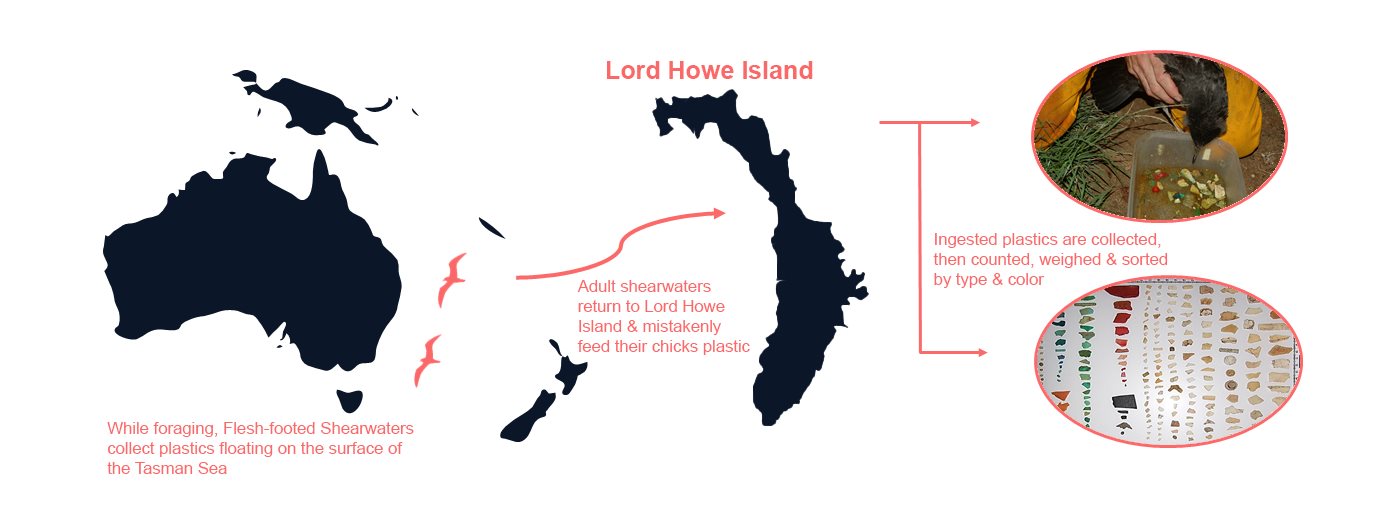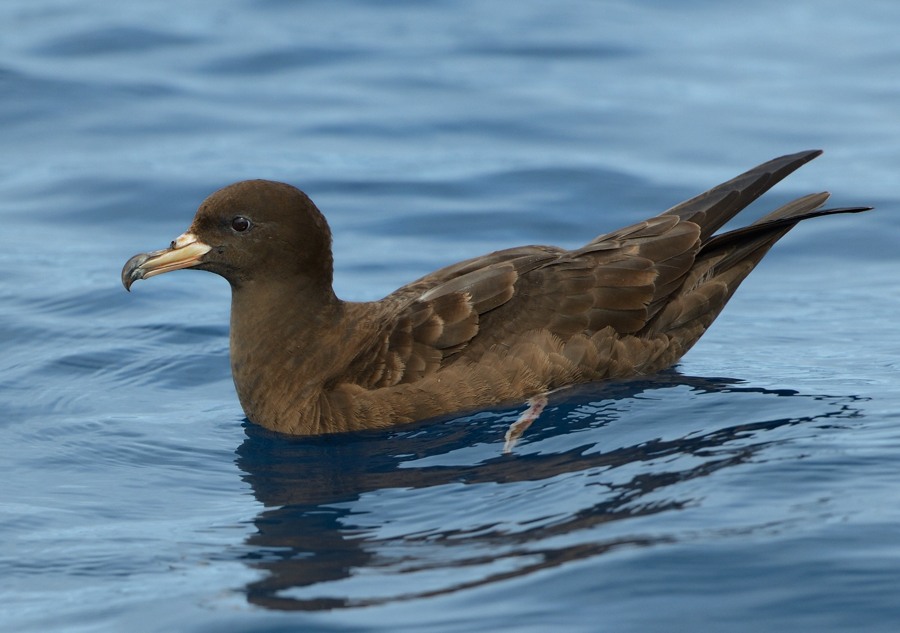
Graphical abstract from the publication
Jennifer Lavers (Institute for Marine and Antarctic Studies, University of Tasmania, Battery Point, Australia) and colleagues have published in the journal Environmental Pollution on plastic ingestion by Flesh-footed Shearwaters Ardenna carneipes on Australia’s Lord Howe Island.

Flesh-footed Shearwater at sea, photograph by Kirk Zufelt
The paper’s abstract follows:
“The world's oceans are under increasing pressure from anthropogenic activities, including significant and rapidly increasing inputs of plastic pollution. Seabirds have long been considered sentinels of ocean health, providing data on physical and chemical pollutants in their marine habitats. However, long-term data that can elucidate important patterns and changes in seabird exposure to marine pollutants are relatively limited but are urgently eeded to identify and support effective policy measures to reduce plastic waste. Using up to 12 years of data, we examined the benefits and challenges of different approaches to monitoring plastic in seabirds, and the relationship between plastic and body size parameters. We found the mass and number of ingested plastics per bird varied by sample type, with lavage and road-kill birds containing less plastic (9.17–9.33 pieces/bird) than beach-washed or otherwise dead birds (27.62–32.22 pieces/bird). Beached birds therefore provide data for only a particular subset of the population, mostly individuals in poorer body condition, including those severely impacted by plastics. In addition, the mass and number of plastics in beached birds were more variable, therefore the sample sizes required to detect a change in plastic over time were significantly larger than for lavaged birds. The use of lavaged birds is rare in studies of plastic ingestion due to ethical and methodological implications, and we recommend future work on ingested plastics should focus on sampling this group to ensure data are more representative of a population's overall exposure to plastics.”
Reference:
Lavers, J.L., Hutton, I. & Bond, A.L. 2021. Temporal trends and interannual variation in plastic ingestion by Flesh-footed Shearwaters (Ardenna carneipes) using different sampling strategies. Environmental Pollution 290. doi.org/10.1016/j.envpol.2021.118086.
John Cooper, ACAP Information Officer, 08 September 2021

 Español
Español  English
English  Français
Français